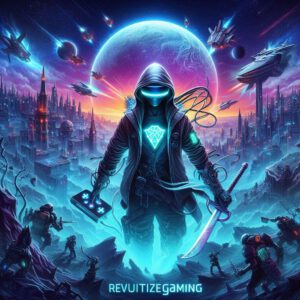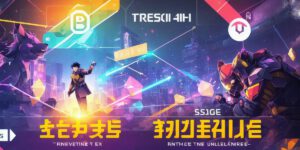If you’re an NFT developer, you’ve likely been keeping up with the latest trends in gaming. One trend that has gained a lot of attention recently is the integration of non-fungible tokens (NFTs) into games. In this article, we will explore what NFT games are and how they are expected to evolve by 2024.
What are NFT Games?
An NFT game is a type of game that uses NFTs as a way for players to interact with the game’s assets. These assets can include anything from in-game items, like weapons and characters, to collectibles, like rare cards and artwork. By using NFTs, these games can create a unique and ownable experience for each player, which sets them apart from traditional gaming models.
One example of an NFT game is Cryptokitties, which was launched in 2017. Cryptokitties allowed players to buy, sell, and breed unique digital cats using NFTs. The game quickly gained popularity and raised over $3 million in just a few months. Since then, there have been many other NFT games that have emerged, such as Rare Digital, which allows players to own and trade rare collectibles, and Sorare, which lets players create their own football teams using NFTs.
How will NFT Games Evolve by 2024?
There are several ways that NFT games are expected to evolve by 2024. One of the biggest trends is the integration of decentralized finance (DeFi) into gaming. DeFi is a set of financial tools and protocols built on blockchain technology, and it allows for the creation of decentralized applications (dApps). By integrating DeFi into games, players can use NFTs as a form of currency to buy and sell items within the game. This could create new opportunities for players to monetize their in-game assets and could also lead to more complex and strategic gameplay.
Another trend is the integration of augmented reality (AR) and virtual reality (VR) into NFT games. AR and VR technologies allow for a more immersive gaming experience, and they could be used to create new types of NFT games that are more interactive and engaging than traditional games. This could lead to a new generation of players who are more invested in the game and its assets.
Finally, we can expect to see more collaboration between NFT games and other industries, such as fashion and music. By partnering with these industries, NFT games could create new types of collectibles that are tied to real-world products or events. This could lead to new revenue streams for game developers and could also create new opportunities for players to engage with the game in new ways.
Conclusion
NFT games are a relatively new trend in the world of gaming, but they have already shown a lot of promise. By integrating NFTs into games, developers can create unique and ownable experiences for each player, which sets them apart from traditional gaming models. As technology continues to evolve, we can expect to see more innovation in the world of NFT games, including the integration of DeFi, AR/VR, and collaboration with other industries. Whether you’re an NFT developer or a passionate gamer, there’s no doubt that NFT games are an exciting area to watch.



